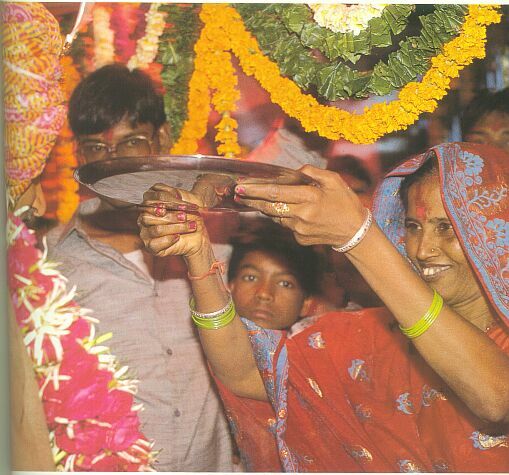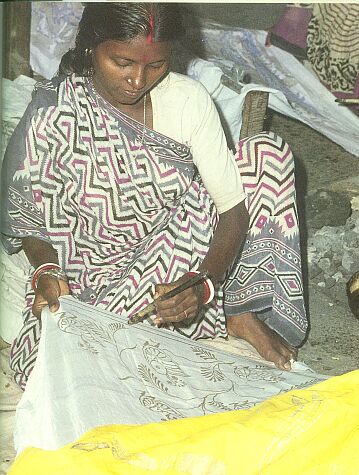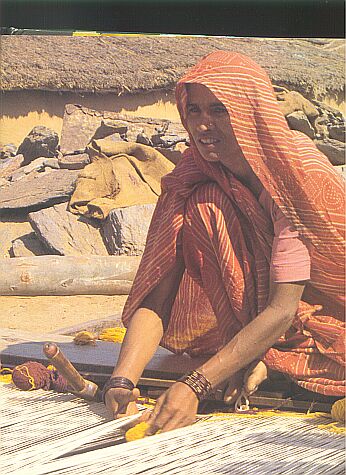Congratulations to Jaina Mishra for a nice initial salon essay that takes us into a new area.
Do not be disheartened if not many of us can contribute much by way of discussion. Steve Price has argued, I now think correctly, that sometimes there are salons the virtues of which are mostly in the salon essay itself. This may well be one of those.
I did, though, look through my books a bit to see if there was anything there that might be useful. Mostly not. The most explicitly “Indian” book I have warns that it is devoted to “floor coverings.” Now the Mughuls and the Ottoman rulers sometime used as floor coverings relatively fragile textiles, but I doubt that anyone has thought of using a “saree” (same as “sari?”) in that way, especially since these latter textiles are intended for another purpose entirely.
But I did encounter three photos and I will put them up below with their captions on the chance that they may contribute (in general terms) to a “saree” discussion. None of the sarees I found are from the Indian state of Orissa.
These photos are all from a book entitled, “World Crafts,” by Jacqueline Herald. It is an Oxfam publication, dated 1992.
The first photo of a saree it offers seems likely to be a “five yard” type.

The caption says “…Blessing the bridegroom – a wedding celebration in Ahmedabad, Gujarat, India in 1991; she wears a brand-new or newly dyed and printed sari…”
The photo does not seem to show whether a blouse and we can't tell whether a skirt is worn under it.
The next picture, immediately below, may be more questionable as a garment that fits into the “saree” category at all.

This time the caption says, “…A member of the Sundarban Khadi Village Industrial Society in Calcutta painting wax resist onto cotton.”
There is the sleeve of an under blouse visible and the border on the bottom edge of the skirt is in clear sight. But I do not know whether this lady’s dress is a species of “saree” and if not, why not.
A third photo (below) seems more certainly again a saree.

Its caption says “…Ratni Devi, a panja dhurry weaver from Mayon village, Haryana, India…”
While this last garment is a saree, it is also another not within the close state focus of our salon essay category. It would appear to be one of the “five yard” type. We see a blouse sleeve extending.
I am not clear about whether we can see a “pallo” in any of these three photos or about whether we should expect to.
Regards,
R. John Howe
